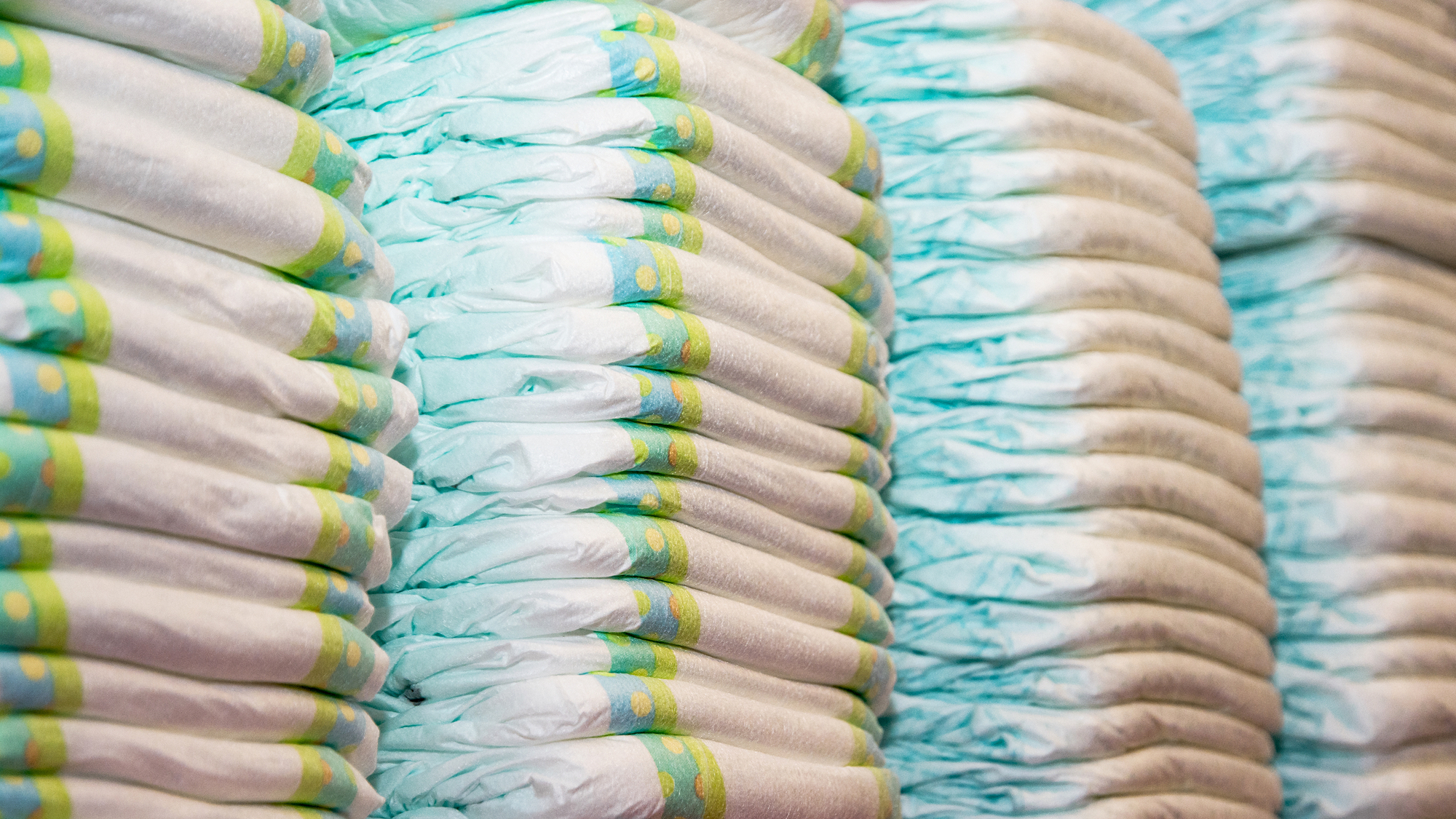

American families need over one trillion diapers every year for the 4 million babies born across the country annually. Diaper use can extend far past the first year of infants’ lives—and they generally don’t finish potty training until somewhere between 1.5 to 3 years old. Extrapolate those needs to the entire world, and it’s easy to see how disposable diapers are the third-most prevalent consumer product found in landfills. Because most diapers contain plastics such as polyester, polyethylene, and polypropylene, they are expected to linger in those same landfills for about 500 years before breaking down.
But what if disposable diapers’ lifespans expanded far beyond their one-and-done use? Environmental engineers recently pondered that very question, and have reportedly found a surprising solution: diaper domiciles.
As detailed in a paper published on Thursday with Scientific Reports, a trio of researchers at Japan’s University of Kitakyushu combined six different amounts of washed, dried, and shredded diaper waste with gravel, sand, cement, and water, then cured their samples for 28 days. Afterwards, they tested their composite materials’ resiliencies, and recorded some extremely promising results.
[Related: Steel built the Rust Belt. Green steel could help rebuild it.]
For a three-story, 36-square-meter floor plan, the team found that the cured diaper waste could replace as much as 10 percent of sand within a structure’s traditional concrete support beams and columns. In a single-story home, that percentage nearly tripled. Meanwhile, diapers could swap out 40 percent of the sand needed in partition wall mortar, alongside 9 percent of the sand in flooring and garden paving. All told, disposable diaper waste could replace as much as 8 percent of all sand in a single-story, 36-square-meter floor plan.
The team’s results are extremely promising for low- and middle-income nations facing intense housing crises. For the purposes of their study, researchers adhered to Indonesian building codes to mirror a real world application. “Like other developing countries, low-cost housing provision in Indonesia has been a serious concern in the last three decades,” writes the team in their article. Indonesia’s urban population is growing at around 4 percent per year, resulting in an annual housing deficit of as much as 300,000 homes per year, the authors also noted.
Moving forward, researchers note that collaboration would be needed with government and waste facility officials to develop a means for large-scale collection, sanitization, and shredding of diaper waste. At the same time, nations’ building regulations must be amended to allow for diaper-imbued concrete. Still, the findings are a creative potential solution to the literal and figurative mountain of a sustainability issue—one that may soon finally be toppled. Just make sure it’s all sanitized first.
